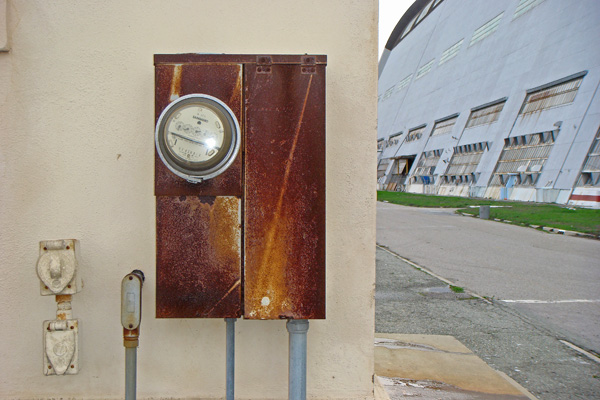
I learned a few interesting things at the NASA Virtual Worlds conference. One is the use of “mixed reality” to describe situations where you’re not fully embedded in a virtual reality, but instead have some aspect of cybernetic reality overlaid onto your visual field. We saw some pictures of a mixed reality Pac-Man game carried out in Singapore, where players wearing goggles saw virtual power pellets on the sidewalks.
[This isn’t the mixed reality Pac Man, instead it’s a funnier video of guys acting out Pac Man on a Japanese TV show.]
Another thing I learned is that Stephenson’s word “metaverse” has edged out Gibson’s older word “cyberspace” as a word for virtual (or mixed) realities. Not that the people who talk about “metaverse” are particularly thinking about Stephenson’s Snow Crash. The word’s taken on a life of it’s own, usually referring to some kind of shared mixed reality.
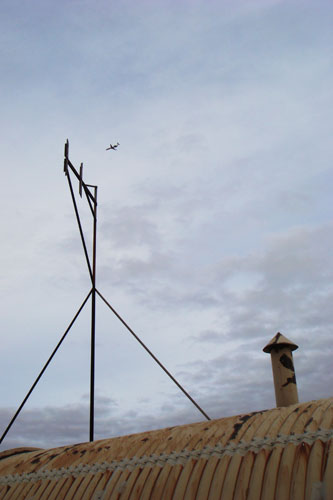
Speaking of “metaverse” there’s a interesting-sounding conference called Metaverse U coming up at Stanford on the weekend of Feb 16-17, hosted by the Stanford Humanities Lab. I plan to attend at least part of this, though I won’t be speaking.
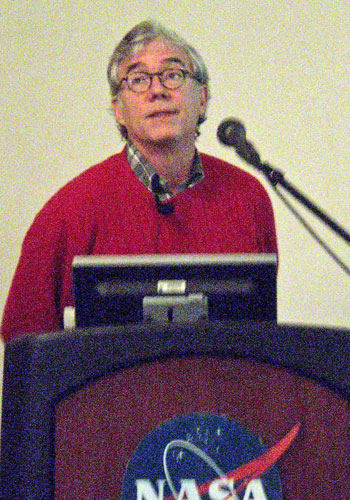
[Photo by Bruce Damer at the NASA Virtual Worlds conference]
The following is what I used on Jan 27, 2008, instead of Powerpoint slides for my talk “After the Orphidnet” at a Virtual Worlds conference held at the NASA Ames center, in the shadow of the Gothic Blimp Works at Moffet field. (Does anyone but me remember the tabloid East Coast comix zine of that name, ca. 1968?)
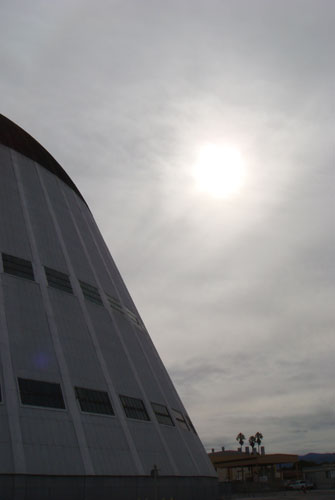
Links with info about other speakers can be found at Stan Trevena’s blog.
On to the “slides” for the talk…
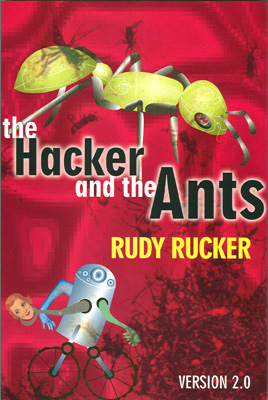
My first novel about virtual reality, The Hacker and the Ants, was based on my experiences working as a programmer on the Autodesk Cyberspace project.
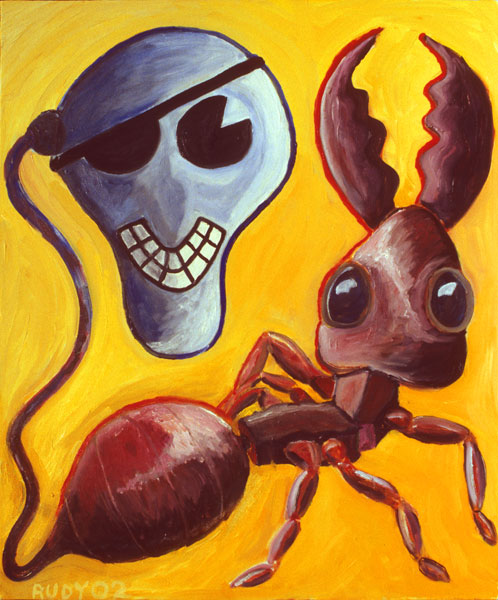
In my novel, an artificial life virus takes over the chips that live inside high-definition TVs. All you can see anymore on television is artificial ants. My hero is charged with treason.
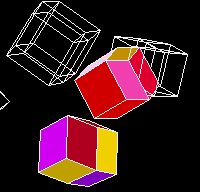
I like using cyberspace to enter four-dimensional space, and I worked on some 4D VR models at San Jose state.
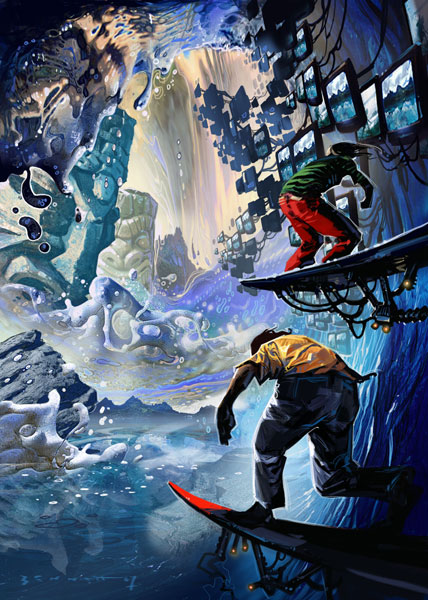
I’m also interested in highly dynamic virtual realities. In the January, 2008, Isaac Asimov’s Science Fiction magazine, Marc Laidlaw and I have a story, “The Perfect Wave” about a VR cave that simulates surf in real time.
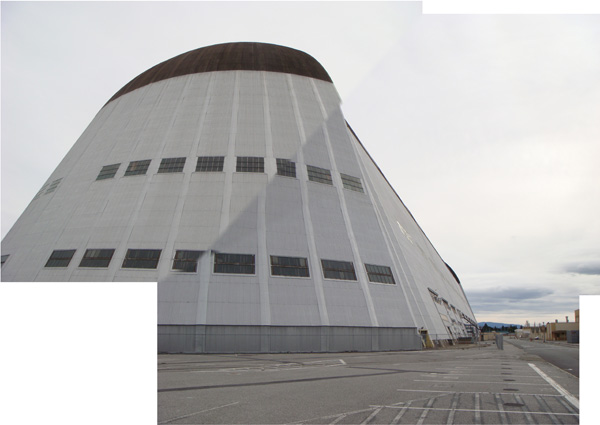
I think the reliance on polygon-based cyberspaces might go away. I like the “locative art” notion of overlaying computer realities onto the physical world, taking advantage of the GPS grid.
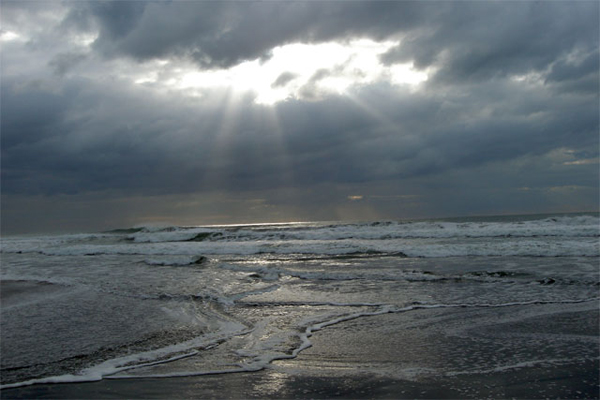
William Gibson picked up on this in his recent book Spook Country, where he says cyberspace has everted, or turned inside out.
“‘And once it everts, then there isn’t any cyberspace, is there? There never was, if you want to look at it that way. It was a way we had of looking where we were headed, a direction. With the grid, we’re here. This is the other side of the screen.’” p. 64.

One SF idea for a reality-based VR is in my novel Saucer Wisdom : flying cameras called dragonflies.

In my latest novel, Postsingular, I talk about carpeting the planet with a GPS grid based on self-reproducing nanomachines called orphids.
Orphids self-reproduce using nothing but dust floating in the air. They’re not destructive. Orphids are territorial; they keep a certain distance from each other. They’ll cover Earth’s surface, yes, but only down to one or two orphids per square millimeter. They’re like little surveyors; they make meshes on things.
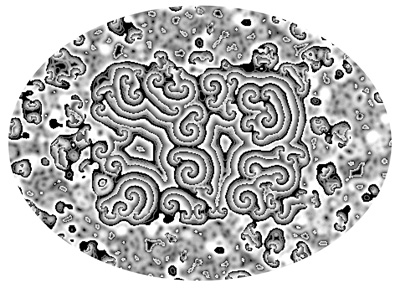
She let herself see the dots on her fingers, dots on her palms, dots all over her skin. The glowing vertices were connected by faint lines with the lines forming triangles. A fine mesh of small triangles covered her knuckles; a coarser mesh spanned the back of her hand. The computational orphidnet was going to have realtime articulated models of everything and everyone.
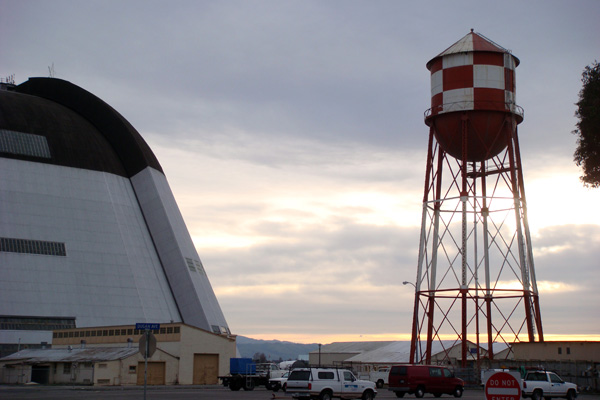
=====
The con was co-organized by the dynamic, multiferous, and cheerful Bruce Damer, photo below.
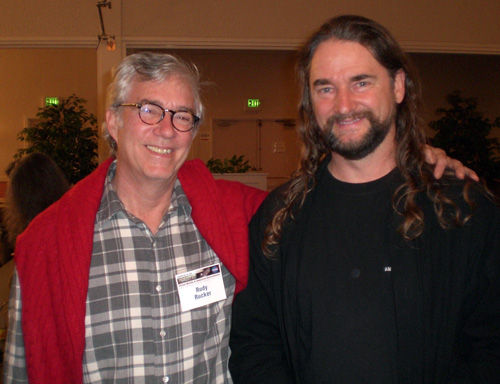
[Photo by the husband of the one true SF fan in attendance, who kindly asked me to autograph a book, but whose name I don’t remember.]









January 28th, 2008 at 10:07 pm
Are you presenting a talk to NASA? I’m unclear on the headline . . .
January 29th, 2008 at 1:54 am
Oh, and those dragonflies? They’re real now!
January 29th, 2008 at 7:14 am
Mac, I added some links at the top of the entry explaining what the entry is. It was fun doing my prsentation as a blog entry, as most of the audience had laptops and just went to the blog. This could be a trend. Then you don’t need the projector and the screen…
I know there have been UFO-type rumors about dragonfly cameras, but I don’t think they exist in the form I imagine. There IS a lightweight camera on a board (but no wings, just the board) trademarked as DragonFly, and the Brit police have a little flying camera with 3 – 5 helicopter blades, and I’m sure the Pentagon is working on a dragonfly camera.
If you have some juicy dragonfly links, put them in a comment and it’ll automatically go into WordPress moderation and eventually I’ll clear it and we can see them.
Thanks,
rudy
February 3rd, 2008 at 10:51 am
Mac Tonnies, indefatigable plumber of the beyond, sent me a link to a Washington Post article featuring the dragonfly cams he thought of when he saw my Saucer Wisdom illustration.
Thanks, Mac, this article is a goldmine of secondary linkage as well. Two cool ones:
(1.) A 2007 Swiss conference on flying insects and robots.
(2.) A video of a Harvard U robot fly .
February 3rd, 2008 at 2:21 pm
Very intersting links, indeed. The Swarmeniod site (http://www.swarmanoid.org/), with eye-bots, foot-bots, and hand-bots, seems down-right Ruckerian – there are even some ants invading the site!
November 26th, 2008 at 2:52 pm
that pac man stuff is so funny i love it